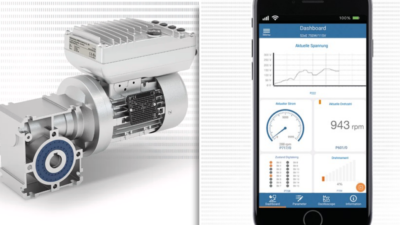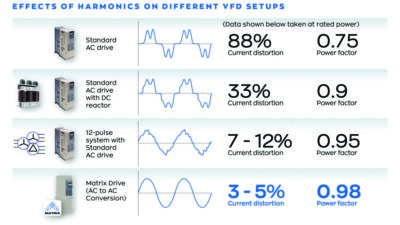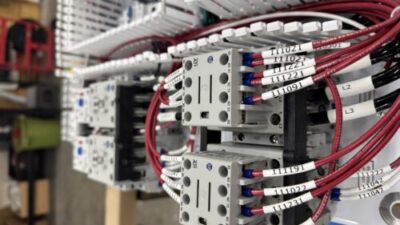For servo motors, it's not location, location, location. It's position, position, position—or more accurately position and force or torque. The two together determine a servo motor's cost and suitability for a particular task. Generally, greater positioning accuracy is more expensive; greater torque is also more costly.
|
For servo motors, it’s not location, location, location. It’s position, position, position—or more accurately position and force or torque. The two together determine a servo motor’s cost and suitability for a particular task. Generally, greater positioning accuracy is more expensive; greater torque is also more costly.
In addition to position and torque, an important factor to keep in mind when buying a servo motor is associated software. Of particular importance is how easy software is to use.
Support also is important, technical and otherwise, along with ability of a motor to operate in a given environment. Combined, these elements determine which servo motor is best for an application.
Speed, accuracy
In selecting a servo motor for positioning accuracy and torque, a series of tradeoffs have to be made. Part of the balancing act involves money and performance. A sensorless feedback, small, industrial-grade servo motor can run a few hundred dollars. A system capable of the sub-millimeter positioning accuracy required for precision machining can cost thousands.
Which will be best in a particular situation depends, of course, on the application. A pick-and-place robot, for instance, might require some sort of feedback to achieve a positioning accuracy of a few millimeters, but that requirement might be satisfied with a servo motor that costs less than a thousand dollars.
When it comes to torque, the tradeoff involves money and speed. Servo motors typically run at several thousand rpm, and gearboxes are used to step down the speed and step up the torque. Tim Schumann, corporate engineer with servo motor maker SEW Eurodrive, noted that speed/torque provides a way to differentiate among servo motors. “Basically, you can compare them as low torque/high speed and high torque/lower speed,” he said.
Candy bars can illustrate the range of possible speed/torque combinations. After being made, finished candy bars may be wrapped by a high-speed operation driven by a low-torque motor. The bars might then be placed in a box by an arm driven by a slower but higher torque motor. Finally, the box itself will be stacked at the end of the line by an even slower motor that generates force needed to move the fully loaded boxes. As a result, one machine may house two very different servo motors. Since many vendors don’t have servo motors that cover the entire speed/torque range, a manufacturing line, or even one machine in a line, may use different vendors’ motors.
Software
Getting various servo motors to play nicely with a system has become easier as the motors have become smarter. Vendors increasingly offer modules which combine a controller, a servo, some network functionality, and some onboard I/O points. As part of a distributed network, such modules can reduce system costs and potentially boost overall performance and reliability. Because the software can take care of some messy details involved in actually running a servo motor, it’s possible for users to deploy an application without having to learn or support multiple types of servo motor software.
Along with those advantages, however, comes an increasing need for what can be considered complex software. The software, whether it’s in a controller at the drive or in a cabinet, has to handle positioning to the required accuracy and I/O communications to and from a programmable logic controller (PLC) or other control points. Timing of this information flow can be critical.
This is one reason why the ease-of-use of software can be as important as positioning and torque of the servo motor itself. Vendors are responding to this need, attempting to create software that is intuitive, user-friendly, easy to set up and allows for easy tuning of a drive. Ease-of-use, unfortunately, is in the eye of the beholder and may have as much to do with personal preference and familiarity as anything else.
Due to the varied interpretations of the term “easy” when it comes to software, an increasing number of vendors offer technical support, which can prove vital to a project and must be considered when purchasing a servo motor. Support can include training at a facility or on-site visits from a vendor’s engineers. Part of the package might also include actual writing or customization of software.
Behind the scenes
Availability of mechanical support should also be considered for the servo motor and associated gearboxes. When the servo motor wears out, both have to be replaced. While it’s possible to keep some inventory on hand, the most cost-effective approach may be to ask a vendor to supply replacements on a rush basis.
Given the myriad combinations of motors and gearboxes, vendors can’t really be expected to stock and pre-assemble virtually every arrangement. So the question becomes what sort of rush delivery is available for what cost. The answer will depend on how the vendor runs its servo motor assembly line and where production takes place. The time to determine the answer to such questions is before making a purchase, not after a line has gone down because a machine failed.
A variation on this problem can arise if a machine with a servo motor is shipped into a country where the servo motor vendor doesn’t offer local support.
Again, the time to address this problem is before the purchase, not after.
Of course, any servo motor has to have the proper voltage and power rating to be considered for purchase. Likewise, it must also be able to handle environmental requirements: vibration, ambient temperature, and hazardous or harsh conditions. The latter can be determined by looking at the ratings and certifications of a servo motor.
Servo motor checklist
Motor description
Type of cooling
Vibration severity grade
Degree of protection
Ambient operating temperature
Position encoder and resolution
Torque/rated speed
Connectors and cables
Rated voltage
Communication protocols supported
Environmental ratings/classifications
Software



